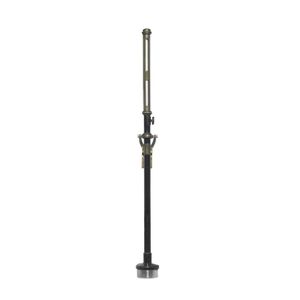Victorian Cast Iron Coat and Umbrella Stand
You must be a subscriber, and be logged in to view price and dealer details.
Subscribe Now to view actual auction price for this item
When you subscribe, you have the option of setting the currency in which to display prices to $Au, $US, $NZ or Stg.
- Column - An architectural feature sometimes used for decorative effect and sometimes as part of the supporting construction. Columns should generally taper slightly towards the top. They may be plain or decorated with carving, fluting or reeding. Columns may be fully rounded or, more commonly, half-rounded and attached with glue, screws or pins to the outer stiles of doors, or the facing uprights on cabinets and bureaux.
- Victorian Period - The Victorian period of furniture and decorative arts design covers the reign of Queen Victoria from 1837 to 1901. There was not one dominant style of furniture in the Victorian period. Designers used and modified many historical styles such as Gothic, Tudor, Elizabethan, English Rococo, Neoclassical and others, although use of some styles, such as English Rococo and Gothic tended to dominate the furniture manufacture of the period.
The Victorian period was preceded by the Regency and William IV periods, and followed by the Edwardian period, named for Edward VII (1841 ? 1910) who was King of the United Kingdom and the British Dominions and Emperor of India for the brief period from 1901 until his death in 1910. - Claw Feet - Carved or cast in the shape of a lion's claw or the talons of other more fabulous beasts. They may be found on chair and table legs, supporting platform bases, and cabinets in the Classical Revival manner. Claw feet are not uncommon on Australian furniture made throughout the 1850s and 1860s, though, as with all forms of carving, the deeper and richer the claws are carved, the earlier the piece is likely to be.
- Reeding - A series of parallel, raised convex mouldings or bands, in section resembling a series of the letter 'm'. The opposite form of fluting, with which it is sometimes combined. Reeding is commonly found on chair legs, either turned or straight, on the arms and backs of chairs and couches and around table edges in the Neoclassical or Classical Revival manner. Reeding was also used as a form of decoration during the Edwardian period, but it is usually much shallower and evidently machine made.
This item has been included into following indexes:
Visually similar items

A heavy forged iron music stand with candle brackets, French, 17th century. 156 cm high, 82 cm wide, 40 cm deep

A steel and brass mounted marine stick barometer by Short & Mason, London, with a brass gimble, 93 cm high

A fine and large cast iron umbrella and stick stand, French, mid 19th century, 69 cm high, 94 cm wide, 26 cm deep

William IV Petit point pole screen c.1830's, mahogany and brass, decorated with an Eastern hunting scene. Height 142 cm
